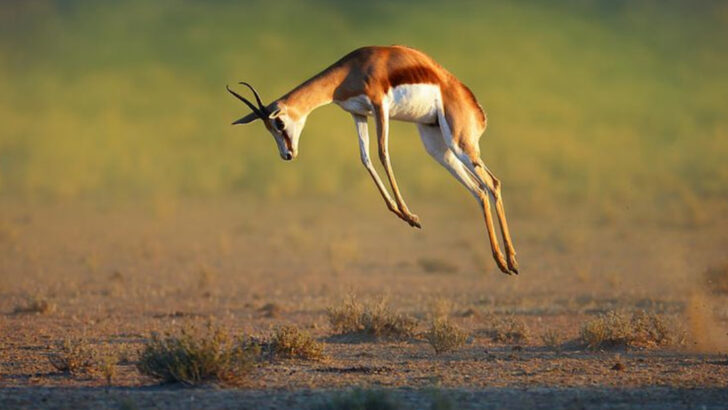Some animals jump so high, it doesn’t look real.
You blink. Rewind. Watch it again. Nope—still looks fake. Like someone cranked the gravity dial way down and hit fast-forward.
These creatures launch themselves skyward with legs like coiled springs. They soar over fences, rocks, even other animals like it’s nothing. Some do it to escape. Others? Just because they can.
From farm fields to jungle floors, these 13 jumpers defy logic, physics, and your expectations. Ready to meet nature’s high-flying stunt team?
Flea
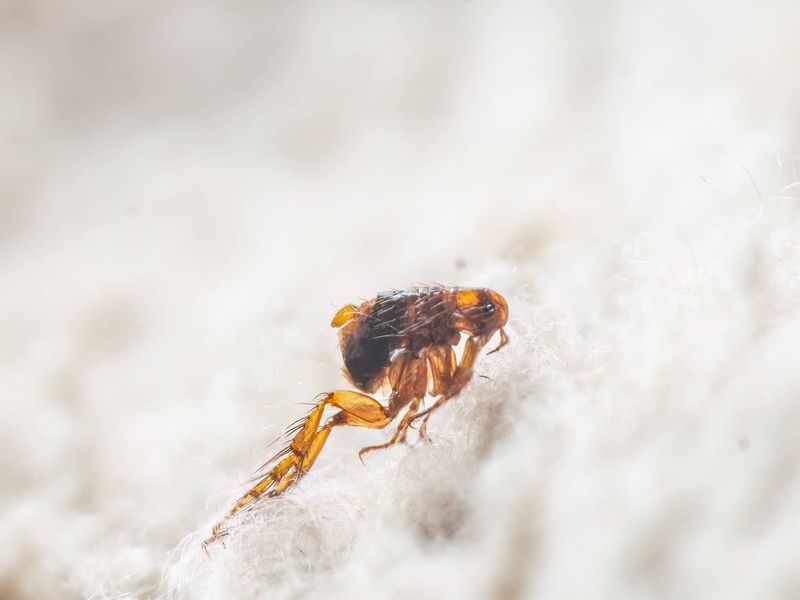
Despite its small size, the flea boasts one of the most incredible leaps in the animal kingdom. Weighing less than a grain of rice, this tiny insect can jump over 100 times its body length. Imagine an average human leaping over a 30-story building!
Fleas use their strong hind legs and a unique protein called resilin to catapult themselves into the air. Their astounding jumping ability helps them escape predators and find new hosts. These minuscule marvels may not be endearing, but their spring-like prowess is undeniably impressive.
Kangaroo
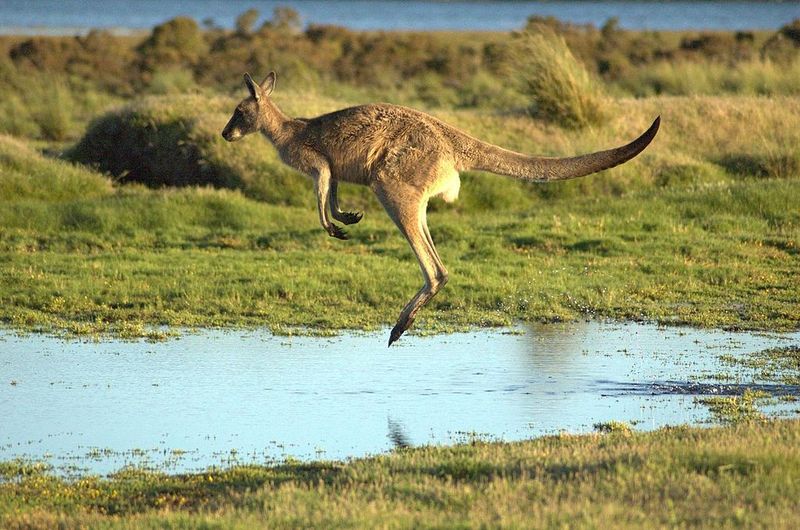
In the Australian outback, kangaroos are true masters of the jump. These marsupials can leap distances of up to 30 feet and heights of 10 feet. Watching them jump feels like witnessing a majestic ballet.
Using their powerful hind legs and massive tails for balance, kangaroos can cover great distances with minimal energy. Their agile movements allow them to escape predators and traverse vast landscapes. These iconic creatures make the Australian wilderness their stage, captivating us with their breathtaking agility.
Tree Frog
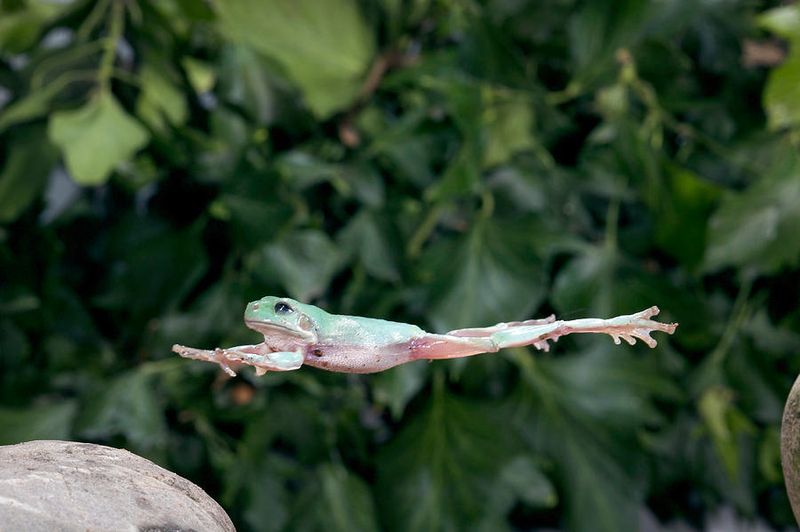
Tree frogs are renowned for their acrobatic leaps, often found in the lush canopies of tropical rainforests. These amphibians can jump up to 20 times their body length, landing with precision on narrow branches.
Their toe pads provide excellent grip, allowing them to maneuver in their arboreal homes effortlessly. The tree frog’s leap is not just a form of transportation; it’s a graceful dance through the foliage. This amphibian’s lively jump is a testament to its adaptability and survival skills in a vibrant ecosystem.
Grasshopper
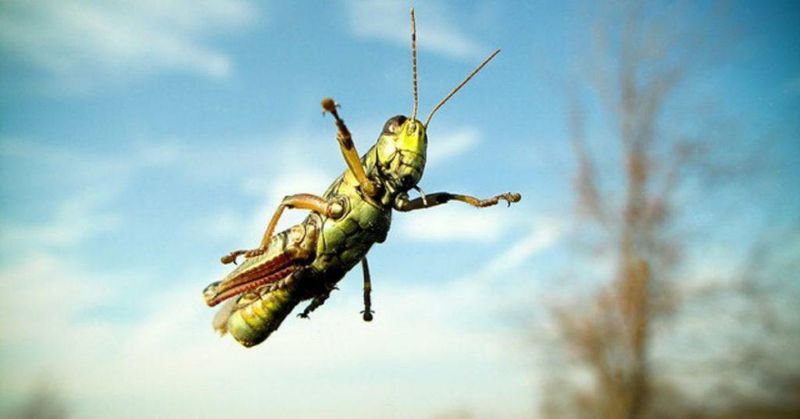
Grasshoppers, the acrobats of the insect world, can leap up to 20 times their body length. Their powerful hind legs act like catapults, propelling them through the air with remarkable speed and agility.
This jumping prowess allows grasshoppers to escape predators quickly and move efficiently between feeding sites. Their muscular legs store energy like a spring, releasing it in explosive bursts. It’s a spectacle of nature’s engineering that serves both function and fascination, a marvel to behold in the meadows and fields where they thrive.
Hare
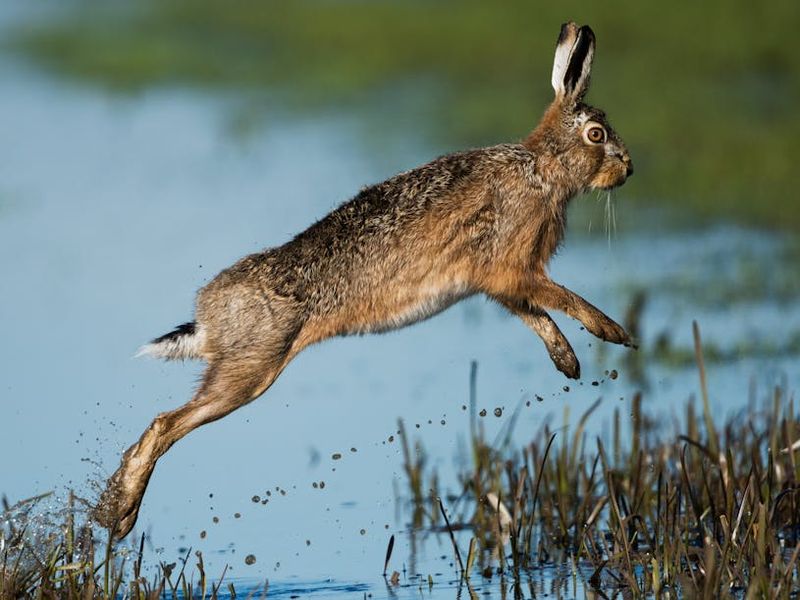
Hares, the elegant sprinters of the animal world, can jump astonishing distances. Their powerful hind legs enable them to leap over obstacles and escape predators with ease.
In open fields, hares display their impressive speed and leaping ability, covering several meters in a single bound. They rely on these skills to evade threats and thrive in the wild. Watching a hare jump is like witnessing a finely-tuned athlete in action, a graceful dance of survival and agility that leaves onlookers in awe.
Dolphin
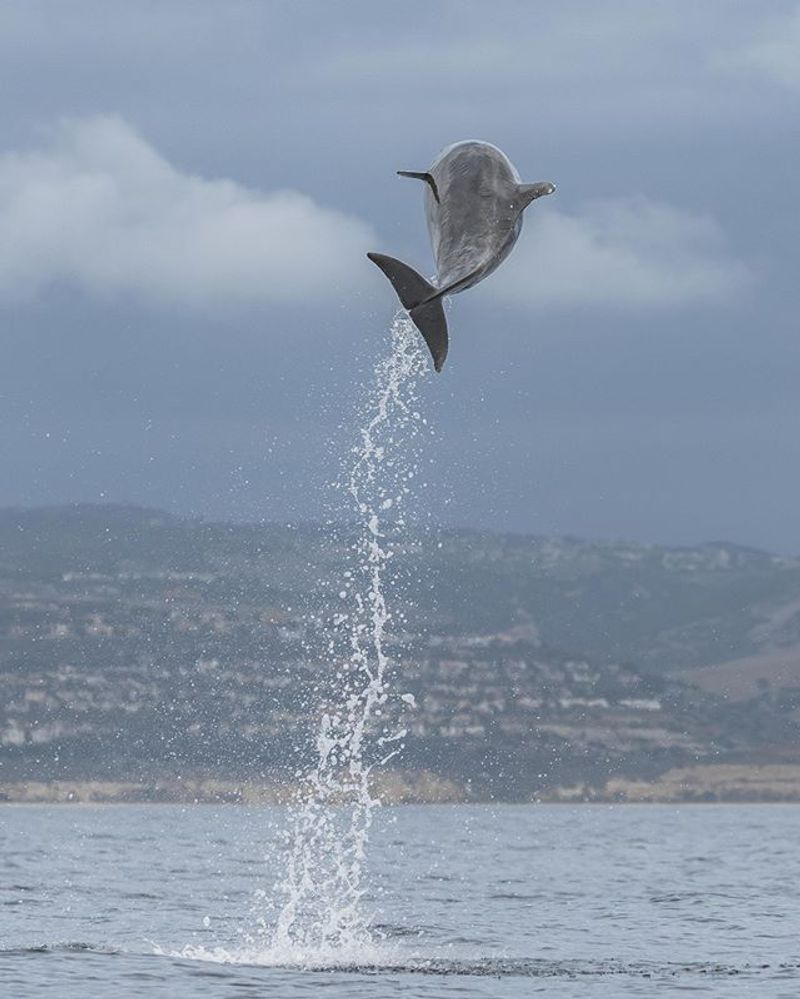
Dolphins are the acrobats of the sea, known for their playful leaps above the water’s surface. These intelligent mammals can jump as high as 15 feet, performing flips and twists that captivate audiences.
Leaping serves multiple purposes for dolphins, including communication, navigation, and simply having fun. Their powerful tails propel them with grace and speed, showcasing their agility and strength. A dolphin’s jump is a joyful expression of freedom, a breathtaking moment of connection between sea and sky.
Impala
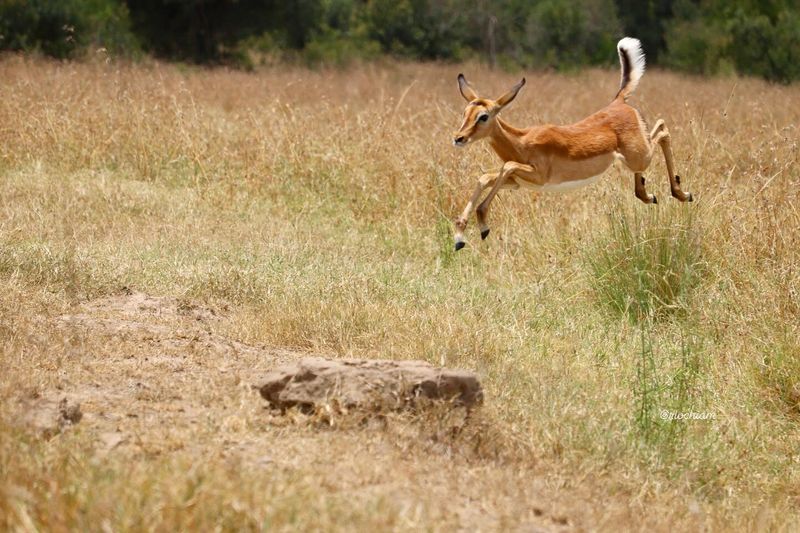
In the African savanna, the impala’s leap is a sight to behold. These graceful antelopes can jump distances of up to 30 feet and heights of 10 feet, effortlessly bounding over obstacles.
Their incredible agility allows them to escape predators and navigate their environment with ease. The impala’s leap is not just a tool for survival but a spectacular display of nature’s artistry. Watching them in motion is like seeing poetry in action, a seamless blend of strength and elegance.
Mountain Goat
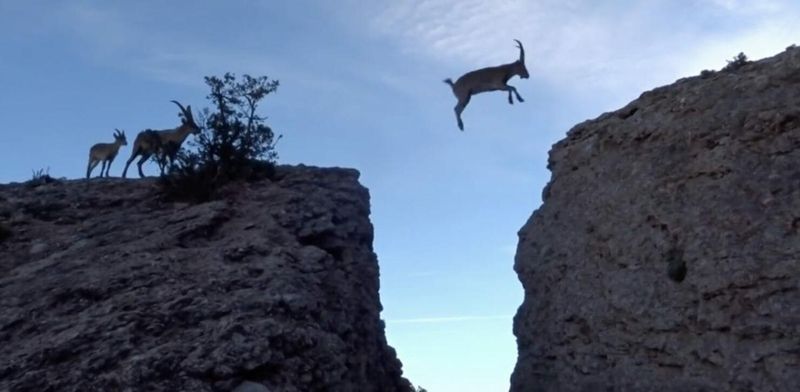
Mountain goats are the daredevils of the cliffs, known for their incredible jumping ability on rugged terrains. These agile creatures can leap up to 12 feet in a single bound.
Their unique hooves provide excellent grip, allowing them to navigate steep, rocky slopes with ease. Watching a mountain goat jump is like seeing a natural tightrope walker in action, defying gravity and fear with every leap. Their astonishing jumps are a testament to their resilience and adaptability in harsh environments.
Cougar
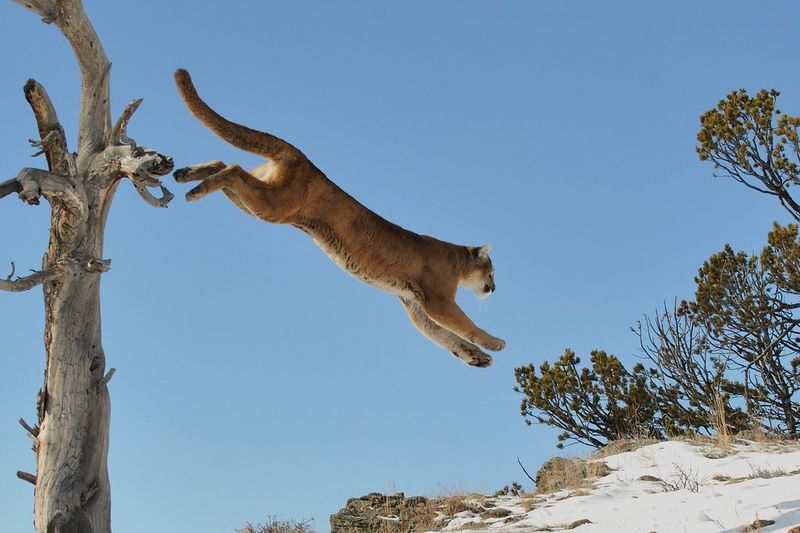
The cougar, or mountain lion, is a master of stealth and surprise, using its powerful legs to pounce on prey from a distance. These majestic cats can leap up to 18 feet vertically.
In the wild, their jumps are crucial for hunting, allowing them to cover ground quickly and silently. The cougar’s leap is both a tool of survival and a breathtaking display of strength and precision. It’s a moment frozen in time, where the world’s wonders and wild instincts collide.
Frog
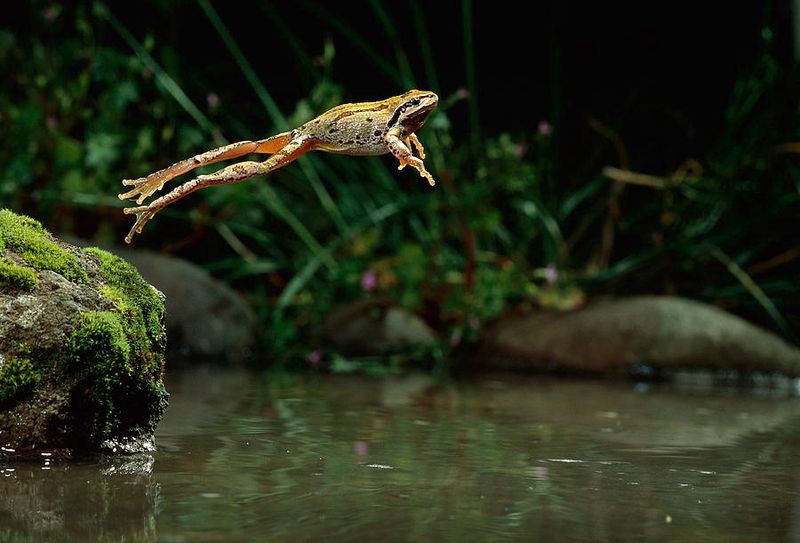
Frogs, the nimble jumpers of the wetlands, are known for their powerful leaps. These amphibians can jump over 20 times their body length, covering impressive distances.
Their long, muscular legs and webbed feet provide the perfect mechanics for these extraordinary jumps. In ponds and marshes, frogs use their leaping ability to catch prey and escape predators. A frog’s jump is a marvel of evolution, a synergy of form and function that continues to enchant those who witness it.
Sifaka
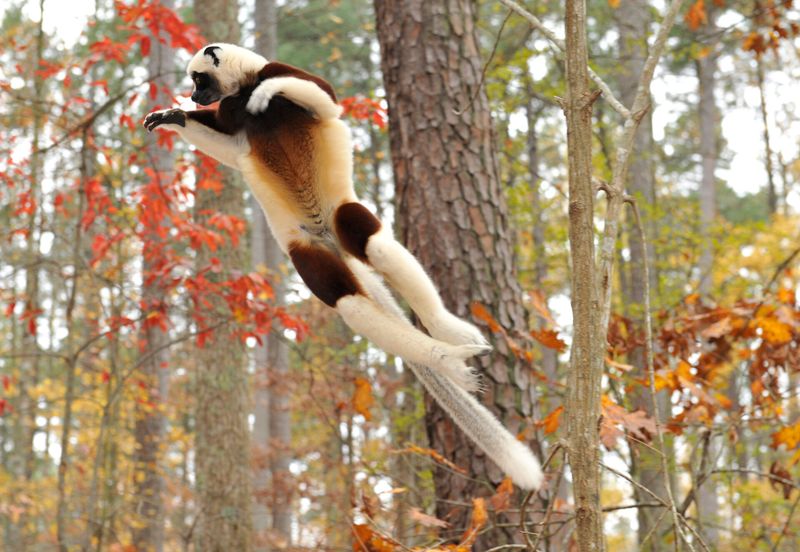
In the forests of Madagascar, the sifaka lemur dances through the trees with unparalleled grace. These primates are known for their unique sideways leaps, covering up to 30 feet in a single bound.
Their strong legs and long arms allow them to move effortlessly between branches. The sifaka’s leap is both a means of locomotion and a joyful expression of life in the trees. It’s a captivating spectacle, a blend of agility and elegance that brings the forest to life.
Bush Baby
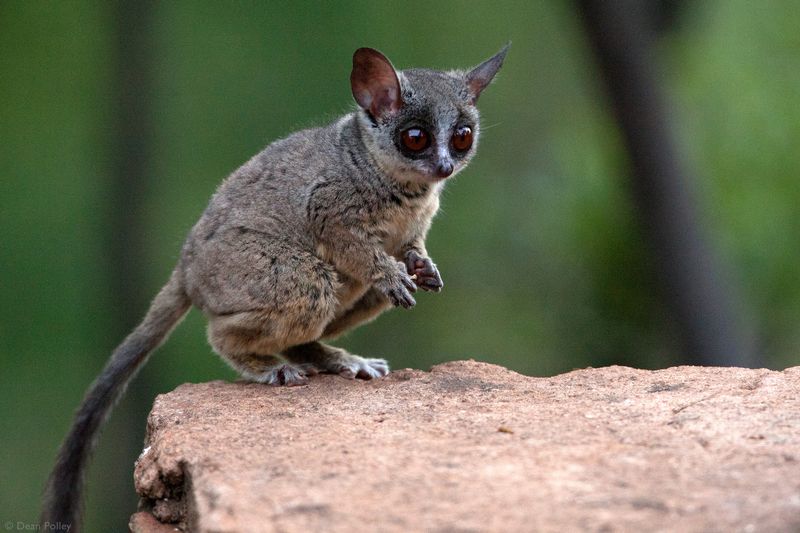
The bush baby, a nocturnal primate, is famous for its enormous leap. With eyes as wide as saucers, these tiny creatures can jump up to 7 feet, despite their small size.
Their strong hind legs and grasping hands enable them to move swiftly through the trees in search of food. The bush baby’s leap is a thrilling sight, a nighttime ballet that combines curiosity and agility. It’s a magical encounter with one of nature’s most endearing jumpers.
Springbok
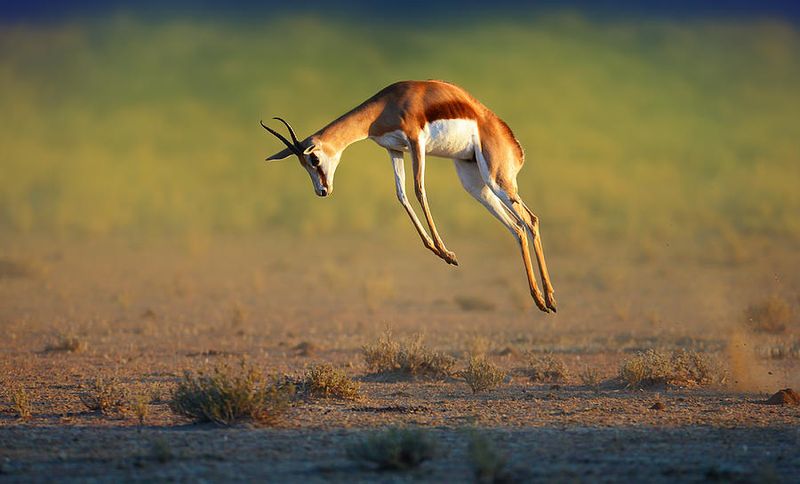
The springbok, an antelope native to southern Africa, is famous for its distinctive jumping display known as pronking. These animals can leap up to 13 feet in the air, bouncing with stiff-legged grace.
This behavior may serve as a signal to predators, showcasing the springbok’s fitness and vitality. In the grasslands, their jumps create a mesmerizing spectacle, a rhythmic dance of survival and celebration. The springbok’s leap is a natural wonder, an exuberant expression of life on the savanna.

